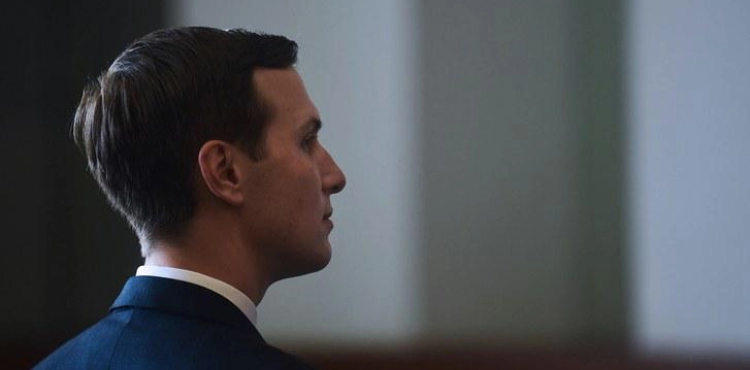"Ten days after the end of the" Peace for Peace "workshop in Bahrain, and despite the mobility of the two innovators, especially the son-in-law of US President Jared Kouchner, from one platform to another to market their" brilliance and crystalline clarity, " Those who have not yet advanced a methodical plan that can be implemented, even theoretically, and their plan is still in the orbit of slogans and loose hopes.
There is a bitter paradox in the economic development plan (issued by the White House) under the supervision of Jared Kouchner, Donald Trump´s chief adviser and peace adviser, along with David Friedman, Trump´s former bankruptcy lawyer and US ambassador to Israel, and Jason Greenblatt, Trump´s negotiator. The plan seeks to raise $ 50 billion, mostly from the rich Gulf Arab states (Saudi Arabia, the United Arab Emirates and Qatar), about half of which will be used to develop the Palestinian economy, while the remainder will go to Palestinians living in Egypt, Nan.
According to experts, the plan avoids addressing the main obstacles to economic development, such as the total siege and closure of the Gaza Strip, as well as the intermittent closures in the West Bank, the dominance of illegal Israeli settlements under international humanitarian law and the discriminatory system of discrimination that treats Palestinians and settlers Separately and unevenly.
"The lack of economic growth and poor economic conditions in the Palestinian territories are not only a byproduct of these violations, but as a result of deliberate Israeli policies," said Sarah Saadoun, economic researcher at Human Rights Watch.
"When Israel occupied the West Bank and the Gaza Strip in 1967, the territories were isolated from their former trading partners," said Moshe Dayan, then Israeli Defense Minister. "We can establish economic integration ... We must connect the two entities [the Palestinians and the Israelis] , If we, for our part and for ourselves, do not want to cut off contacts with these areas, but integration does not include equality, on the contrary, Israel has continued to expand settlements and strengthen its discriminatory regime against the Palestinians, even when Israel partially reflected this integration In 1994, after the Oslo Accords. "
It is noteworthy that the Israeli occupation authorities over the past five decades, used its control over all of Palestine and its lands and water to build fertile housing communities for more than 600,000 Israeli settlers and 19 industrial zones, in violation of international laws relating to the occupation authority. At the same time, the occupation has severely restricted Palestinian access to their natural resources and permits for their development. In 1987, Ariel Sharon, then Israel´s minister of industry and commerce, was told that his policy was to "strictly scrutinize the demands of Palestinians under Israeli occupation to build factories, take into account Israeli industries and the needs of the Israeli market in a comprehensive manner, and the ability to export."
"The threat of Palestinian competition requires the creation of an industry in Israeli settlements" to compete and suffocate the Palestinian economy, Sharon said.
"As a practical matter, this means, for example, that the Israeli government grants its citizens and foreigners permits to build factories in the West Bank on occupied Palestinian land, illegally seized them - often giving generous subsidies to encourage investment - Systematically granting these permits to the Palestinians, even for the land they own, thereby nullifying Israel´s obligations under international law, which discriminate against persons to whom the occupying state has to preserve their right and interests in land administration and to support settlers who are supposed to be prohibited Presence and live in the occupied territories in the first place. "
The researcher cites the state of Israeli quarries in the occupied West Bank to show how the discriminatory restrictions imposed by Israel cost the Palestinian economy $ 241 million a year, according to the World Bank, where Israel licenses 11 occupied-area settlements in the occupied West Bank and provides about a quarter of its gravel market needs, Even though this exploitation of resources in the occupied territories is a war crime and a flagrant violation of international humanitarian law.
One of these quarries belongs to a subsidiary of Hanson Heidelberg Cement. The Israeli occupation authorities granted Heidelberg a permit for its quarries built on land seized from the Palestinian village of Zawiya in the West Bank.
The ease with which these quarries work is a way to stifle Palestinian production, which has been plagued by a permanent ban on Palestinian permits for Palestinian quarries over the past three decades. For example, the Israeli occupation authorities have stopped renewing permits for quarries located in the vicinity of Beit Fajjar, a town some 10 kilometers south of Bethlehem. In 2010, about 80% of the city´s jobs were connected to the stone industry and were distributed among 150 workshops and 40 quarries. In recent years, however, the Israeli occupation authorities have stopped renewing the permits for the few quarries that allowed them to continue their work. Those who continue to work are facing huge fines and confiscation of expensive equipment, as well as difficulties in transporting their products due to delays on hundreds of roadblocks and roadblocks throughout the West Bank.
"Many Palestinian industries have similar stories, Israeli policies hinder their development, while illegal settlement industries are helping to flourish.
According to the World Bank, Israeli restrictions on Area C of the West Bank, an area under exclusive Israeli security and administrative control, cost the Palestinian economy $ 3.4 billion a year.
"If the White House wants peace through prosperity, it must press Israel to end its illegal and discriminatory policies that help stifle the Palestinian economy," she said.












